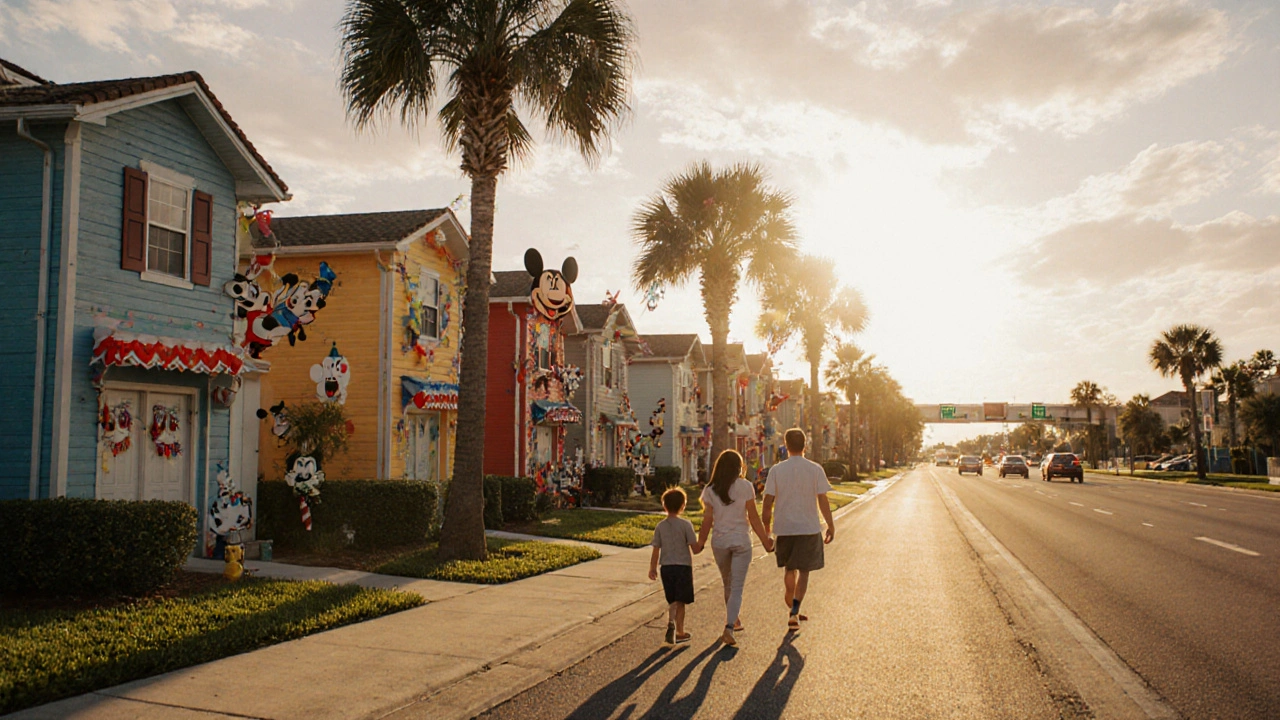Living in Kissimmee: Cost, Safety, Demographics, and Daily Life
When you think about living in Kissimmee, a growing city in Central Florida known for its proximity to theme parks and affordable housing. Also known as the gateway to Orlando’s attractions, it’s a place where families, retirees, and young workers are choosing to settle—not just visit. But is it really as affordable as it seems? And what’s life like beyond the tourist traps?
One of the biggest reasons people move here is the cost of living, a measure of how much money you need to cover basic expenses like housing, food, and transportation. Compared to Orlando, Kissimmee’s rent and home prices are lower—by as much as 20% in some areas. But that doesn’t mean everything’s cheap. Groceries, insurance, and utilities still add up. If you’re budgeting, you’ll want to know the average rent in Kissimmee, what most tenants actually pay monthly for a two-bedroom apartment or house. In 2025, that number hovers around $1,700, which is still below Florida’s state average.
Then there’s the question of safety. Kissimmee isn’t immune to crime, but it’s not the dangerous city some online rumors make it out to be. Certain neighborhoods are quiet and family-friendly, while others near major roads see more activity. If you’re looking to buy a home, you should also consider sinkhole risk, a geological hazard common in Florida’s limestone bedrock that can damage foundations. It’s rare, but not unheard of. Insurance policies here often require extra coverage, so ask before you sign anything.
Demographics play a big role in daily life, too. Over half of Kissimmee’s population identifies as Hispanic or Latino, which means you’ll find authentic Mexican, Cuban, and Central American food, festivals, and services everywhere—from corner bodegas to community centers. This cultural mix shapes schools, local government, and even how businesses operate. It’s not just diversity for show—it’s woven into the rhythm of the city.
And what about the weather? Summers are hot and humid, with afternoon thunderstorms rolling in like clockwork. Hurricane season runs June through November, and while direct hits are uncommon, flooding and power outages happen. If you’re planning to live here, you’ll need a plan: generators, emergency kits, and flood insurance aren’t luxuries—they’re basics.
Walkability? Not great. Most people drive. The downtown area has sidewalks, but if you want to hit a grocery store, park, or movie theater, you’ll likely need a car. Public transit exists, but it’s limited. That’s something to factor in if you’re used to walking everywhere.
So who thrives here? Families looking for more space and lower costs. Retirees who want sunshine without the high prices of Miami or Tampa. Workers commuting to Orlando’s tech or healthcare hubs. And yes—even people who work at Disney and want to live close but not pay Orlando prices.
What you won’t find in this collection are fluff pieces about "sunshine and smiles." Instead, you’ll get straight answers: real rent numbers, actual crime stats, honest takes on schools, and what to expect if you move here next month. Whether you’re comparing cities, negotiating a lease, or just wondering if Kissimmee could be your next home, the posts below give you the facts—not the brochures.
- October 27 2025
- 13 Comments
- Lucas Harrington
Is Kissimmee Florida a good area? Real pros and cons for living, visiting, and investing
Kissimmee, Florida offers affordable living near Disney World, warm weather, and strong rental income potential-but comes with traffic, crime, and average schools. Here's what really matters before you move or invest.
- Disney World Vacations (24)
- Kissimmee Florida (24)
- Florida travel (24)
- Crypto & Blockchain (10)
- Information & Privacy (5)
- Blockchain & Cryptocurrency (4)
- Disney Parks & Tips (3)
- Disney History (3)
- Travel (2)
- Travel Tips (2)
Categories
- December 2025 (17)
- November 2025 (41)
- October 2025 (16)
- September 2025 (6)
- August 2025 (3)
- July 2025 (3)
- June 2025 (2)
- May 2025 (2)
- April 2025 (1)
- March 2025 (6)
- February 2025 (11)
- January 2025 (1)
Archives
- Florida beaches
- Disney World
- Florida
- Kissimmee
- Florida travel
- Kissimmee demographics
- Disney World tips
- Disney vacations
- Disney 100
- theme park tips
- Disney celebration
- tourism
- Kissimmee Florida
- Disney secrets
- Disney history
- travel
- Disney World crowd calendar
- Disney World cost
- Disney World budget
- best time to visit Disney World

